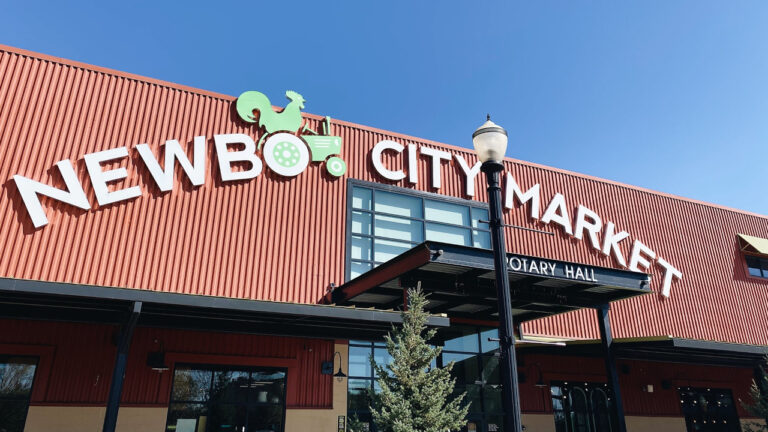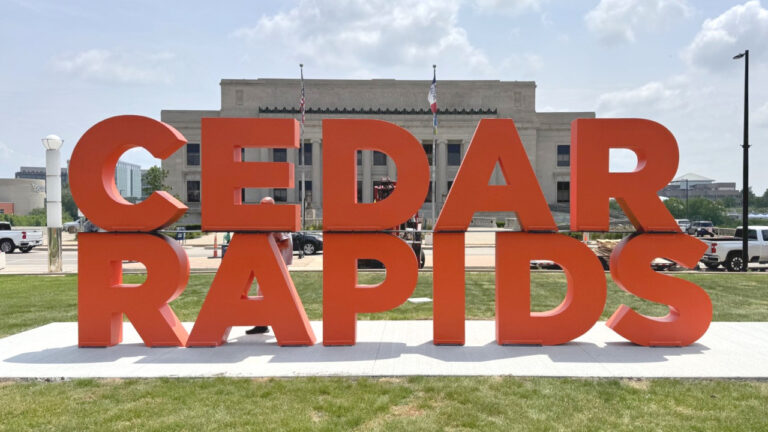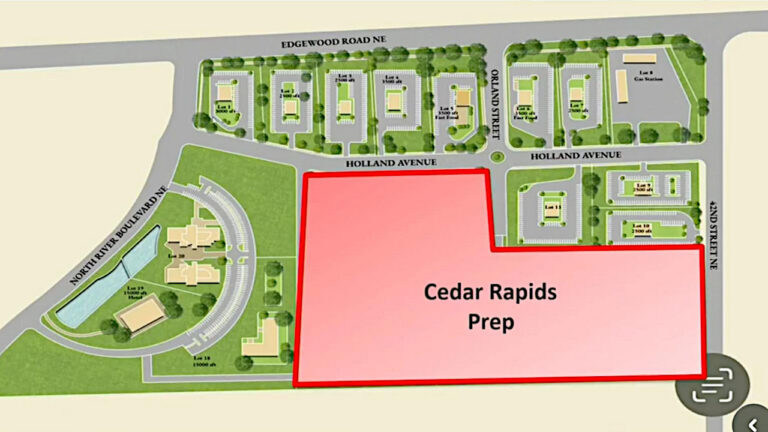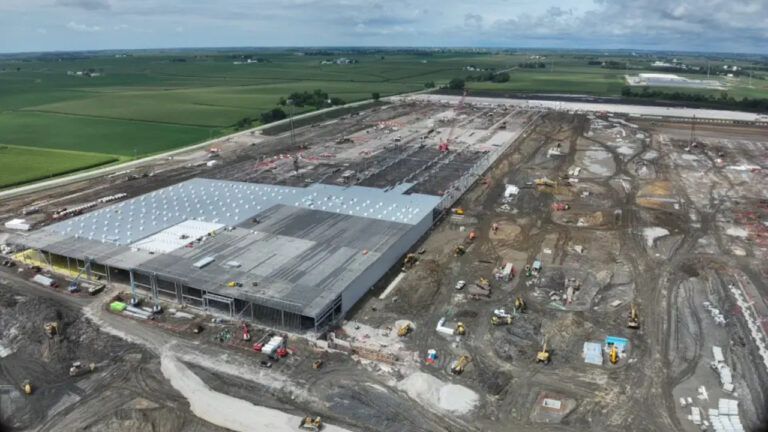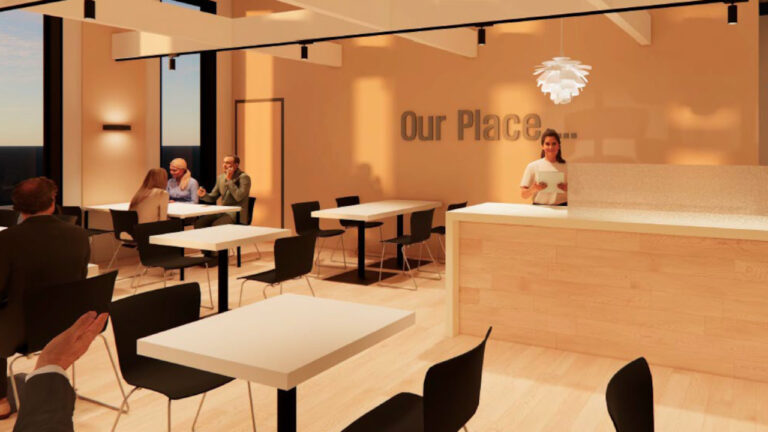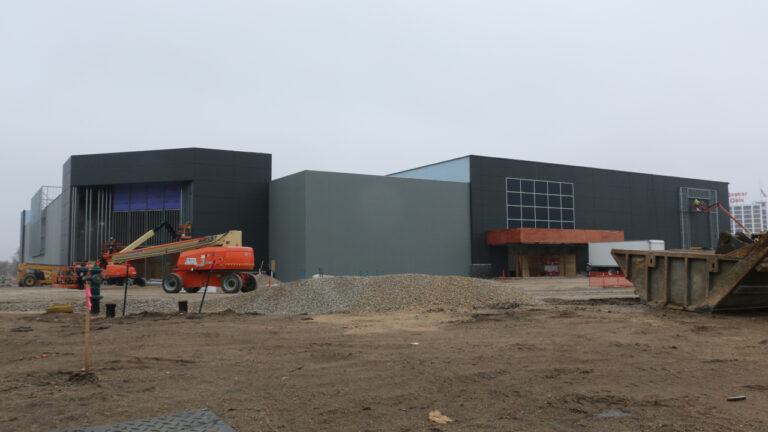Members of the Linn County Planning and Zoning Commission voiced a number of concerns regarding data center development in the county at a meeting Tuesday night to review land use considerations, as county officials develop a data center zoning code for the county.
The move to create a new data center ordinance comes as Google considers a proposal to build a new data center complex near the Duane Arnold Energy Center near Palo. While an exact site for the proposed development hasn’t been identified, it would likely be located in inincorporated Linn County, rather than in any city limits.
Linn County Planning and Development director Charlie Nichols outlined the land use considerations that should be included in a data center zoning code ordinance, and indicated that he felt the county should establish a zoning district classification exclusively for data centers.
“We could look at conditional use permits for smaller tier data centers,” Mr. Nichols said. “But if we’re talking about a 200- to 300-acre project with six to seven million square foot buildings, I think the scale and scope of that impact is large enough that it probably needs the elected officials to weigh in and evaluate the project and the impact long-term for the county.”
In his presentation, Mr. Nichols said the county’s data center zoning ordinance should incorporate a number of land use considerations. Among them:
- The differences between small and large-scale data centers. Data centers have existed for decades, such as those used by telecommunications companies, but “data centers are now hyper scalers, and they are hundreds of acres,” Mr. Nichols said. “They are multiple buildings, and they are very, very different from what historically has been considered a data center … so something we can look at when providing our zoning code is different criteria for different categories and sizes of data centers.”
- Where data centers will be allowed. Many municipalities – including Loudoun County, Maryland – considered the “data center capital of the world” – and Cedar Rapids have “lumped data centers into a generic industrial warehouse use, where they are allowed by right, in industrial zoning districts or office zoning districts.” Loudoun County recently updated their zoning code to require approval from the county’s board of supervisors for any new data centers. “So other ways we can look at permitting these are with a conditional-use permit from the board of adjustment or a unique zoning district, where the decision-making authority is in the Board of Supervisors.”
- Phasing. Mr. Nichols noted that “what we are receiving with data center developers interested in Linn County is that they would like to build one building, and then as they’re finishing up on that building, start on the second building, so the project actually occurs over six to seven years in multiple phases. So we need to consider, when we’re writing our zoning code, that we are applying our regulations to an overall project and not just building by building.”
- Noise. Mr. Nichols said he was surprised to learn “how much of an issue noise is” with data centers. “What zoning staff learned from meeting with places like Loudoun County is that noise is an issue that they didn’t expect, but that has really become one of the most pressing issues for the public with data centers.” The noise is generally described as a hum or low-frequency vibration. “We’re seeing counties that have a lot of experience with data centers updating their noise ordinance,” he said.
- Setbacks. In Loudoun County, residential developments are located within a few of the county’s 200 data centers. “What we can use setbacks for is to mitigate visual impacts, mitigate those noise impacts, and have larger separation distances from sensitive uses, like schools, to help with those noise impacts,” Mr. Nichols said.
- Power availability. In Iowa, which has seen dramatic growth in data center development, 18% of the state’s electricity usage is attributed to data centers – one of the highest percentages in the country, and one that’s predicted to grow. “This is not typically something zoning code gets involved in looking at power availability and power in grid capacity, but it’s something that people are talking about and starting to become a bigger issue,” Mr. Nichols said. “And I think our zoning code can take a look at some aspects of power availability when it comes to siting data centers.”
- Water usage. Data centers often use water for cooling, and the Linn County Board of Supervisors has already commissioned a water use study, funded by Google, to assess the impact of potential new data centers on the county’s water supply. The largest water-consuming data center in the United States is Google’s data center in Council Bluffs, Mr. Nichols said, which “consumes about the same amount of water is 9.4 golf courses over the course of the year.”
- Construction management. The “lay-down area” for construction materials for the new QTS data center in Cedar Rapids is “very large,” Mr. Nichols said, “and the traffic involved in these projects is intensive. We’ve seen damage to county roads. So putting road use agreements and other construction management agreements in place before these projects get started is going to be very important.”
- Temporary power. A Tesla data center installed diesel-powered backup generators, “and they had put them on mobile pads so they didn’t have to follow air pollution permitting standards, because they could say they were temporary, not permanent,” Mr. Nichols said. Most data centers have backup power generators fueled by either diesel or gas due to their need for a constant power supply, but the industry is considering the use of small modular nuclear reactors, but those reactors are still several years from deployment.
- Community benefits. “Something that we might want to consider in the zoning ordinance is requiring some sort of host community agreement, or community benefit agreement, to ensure the data centers contributing long-term to fiscal infrastructure and community goals,” Mr. Nichols said. “The large-scale data centers have regional impacts, but relatively few local jobs once they are fully constructed. So a well-structured community benefit agreement could provide a direct way to convert some of those private investments into public benefits.” Cedar Rapids is already requiring community betterment payments from their data center developers, he said.
After Mr. Nichols’ presentation, several commission members said they had concerns about data center developments in Linn County.
Board chair Tina DuBois said she was concerned about the potential water usage from data centers, and also suggested that any new data center be required to include rooftop solar panels to generate energy, “so they’re replacing some of the energy. It’s a giant footprint where you’re not going to put anything else.”
Board member Diane Brecht said she was concerned about the possibility of data centers being built on prime farmland. “My big concern with all of this is, once again, we’ll be taking up prime farm ground to build these large-scale things like we did with solar, and we need to pay attention to that,” she said. “There’s only so much land to go around.”
She also said that on a recent visit to one of the Cedar Rapids data center construction projects, she learned that many workers were coming from out of state, and raised the possibility that data centers could become obsolete if technology continues to evolve. “What happens if it just ends up being defunct and just sitting there?” she asked.
Commission member Brock Grenis said he understood those concerns, but said “we’ve got to be careful not to zone away investment in the county, because I feel like certain people have stances that we make it so prohibitive that no one wants to invest.”
Mr. Nichols concurred. “This is the role of the Planning and Zoning Commission and the Board of Supervisors, trying to balance economic development with preservation of community resources,” he said. “These are not easy questions to answer, but they’re the right questions to be asking.”
One local resident, Michael Schmidt of Cedar Rapids, expressed his concerns about data center development. “When these are built, they just sit there,” he said. “They don’t bring in jobs. You might get 30 people to maintain them, (and) as mentioned, the construction jobs are temporary.”
Mr. Schmidt also said he was concerned about the data centers’ power consumption. “They’re pulling from the public power grid,” he said. “With these billion dollar companies, they need to be able to supply their own power if they want to be here.”
Mr. Nichols said he expects to present a data center zoning code draft to the Planning and Zoning Commission at their next meeting Nov. 17.




